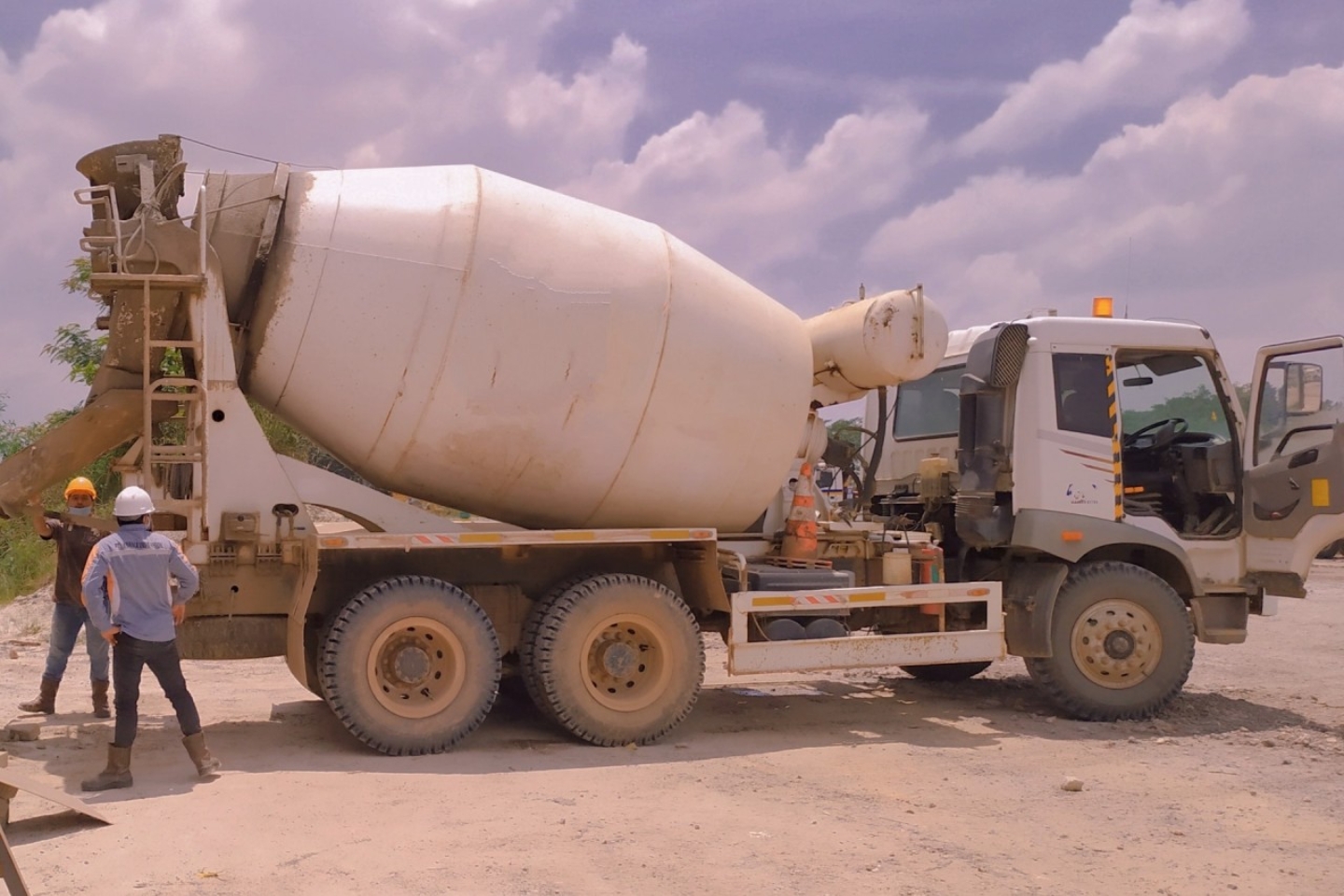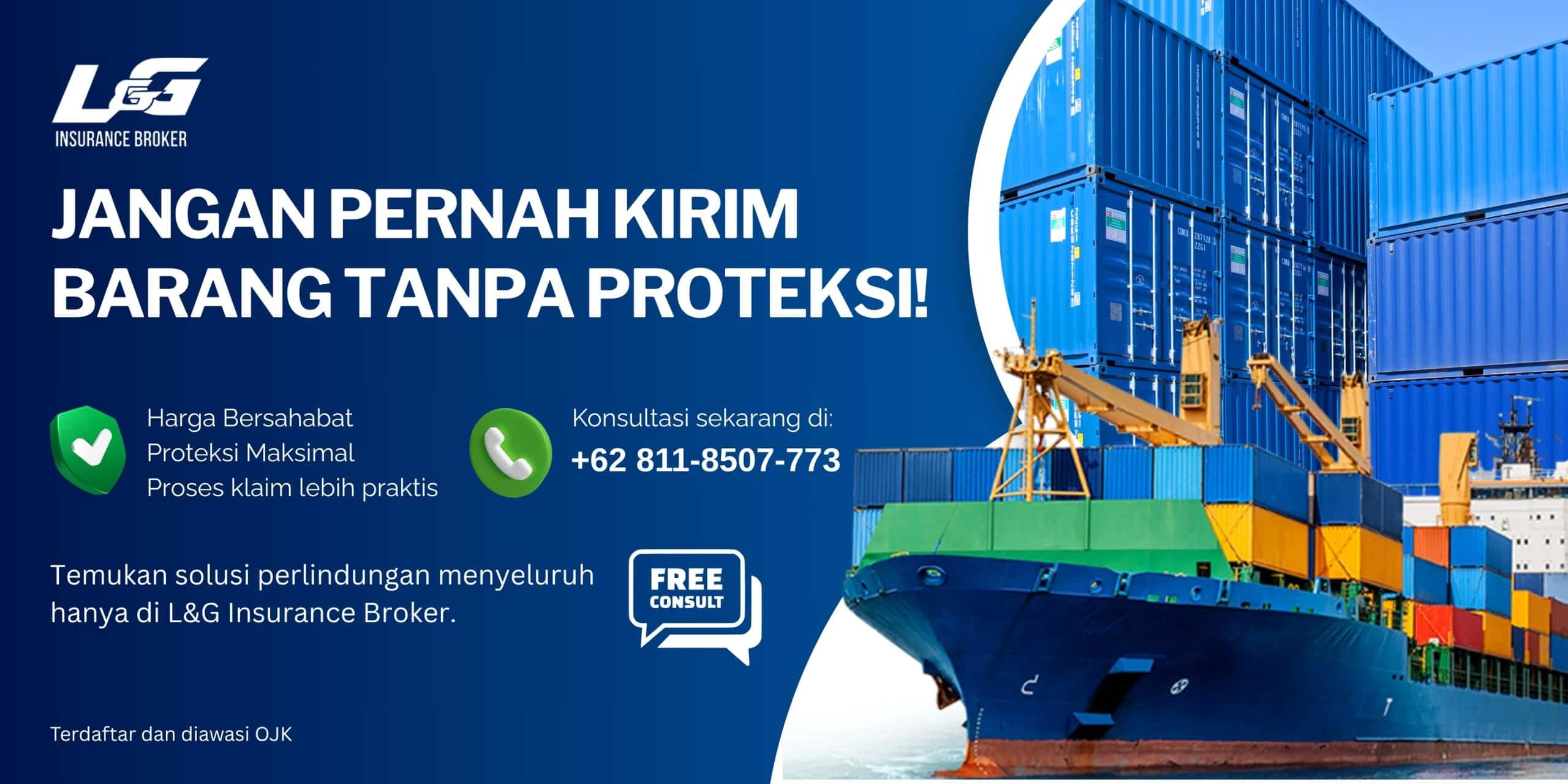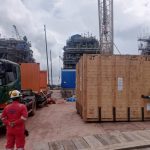Liga Asuransi – Dear risk takers, risk managers, business owners, and esteemed readers,
Welcome to our blog dedicated to exploring the intricacies of risk management and insurance. As a senior insurance broker, I aim to provide valuable insights and discussions that can benefit all involved. If you find our articles informative, please consider sharing them with your friends and colleagues, so they too can deepen their understanding.
Thank you for joining us on this journey of learning and exploration.
Cement transportation is crucial to Indonesia’s economic development and infrastructure growth. As a vital construction component, cement is essential for building roads, bridges, residential buildings, commercial complexes, and industrial facilities. The effective and efficient movement of cement across the archipelago ensures the timely completion of these projects, directly impacting the nation’s economic progress and modernization efforts.
Indonesia’s vast and diverse geography, with over 17,000 islands, presents unique logistical challenges for cement transportation. Reliable transportation networks are critical to overcoming these challenges and ensuring that cement reaches even the most remote and developing regions. Efficient cement distribution supports the government’s ambitious infrastructure programs, such as developing new highways, airports, and ports, which are essential for enhancing connectivity and stimulating economic activities.
Moreover, the construction industry in Indonesia is a significant contributor to the country’s GDP, providing employment opportunities and driving demand for related industries, including logistics, manufacturing, and services. The seamless transportation of cement is integral to maintaining the momentum of construction projects, avoiding delays, and minimizing costs. This, in turn, ensures that infrastructure development projects are completed on time and within budget, fostering investor confidence and promoting sustainable economic growth.
Types of Cement
Cement is a critical material in construction, and various types are tailored to specific applications and environmental conditions. Here are some common types of cement used in the industry:
Ordinary Portland Cement (OPC)
OPC is the most widely used cement type, known for its versatility and reliability in general construction work. It is used for building houses, bridges, roads, and other structures. It sets and hardens quickly, making it ideal for projects requiring fast completion.
Portland Pozzolana Cement (PPC)
PPC includes pozzolanic materials like fly ash, volcanic ash, or silica fumes, which enhance its properties. It offers improved resistance to chemicals, lower heat of hydration, and better durability in harsh environments, making it suitable for marine structures, dams, and sewage works.
Rapid Hardening Cement
This cement type sets and gains strength quickly, allowing for the early removal of formwork and speeding up construction processes. It is ideal for road repairs, precast concrete production, and situations where quick strength development is essential.
Sulphate Resisting Cement
Specially formulated to resist sulfate attacks, this cement is used in foundations and structures exposed to soil or groundwater with high sulfate content. It helps prevent deterioration and extends the lifespan of buildings and infrastructure.
White Cement
White cement is like OPC but with a distinct white color. It is used for decorative purposes, architectural finishes, and aesthetic applications. It is also used in precast panels, tiles, and flooring to achieve a clean and visually appealing look.
Hydraulic Cement
Known for its ability to set and harden underwater, hydraulic cement is used in construction projects involving water-retaining structures like dams, bridges, and tunnels. It is also used for repairing leaks in concrete structures.
Low Heat Cement
This cement type produces less heat during hydration, reducing the risk of thermal cracking in large concrete structures. It is ideal for mass concrete works, such as large foundations, retaining walls, and gravity dams.
Blended Cement
Blended cement incorporates various materials like fly ash, slag, and silica fumes to improve its properties. It offers enhanced durability, reduced permeability, and better resistance to chemical attacks, making it suitable for a wide range of construction projects.
Common Modes of Cement Transportation
Transporting cement efficiently is crucial to maintaining its quality and ensuring timely delivery to construction sites. The choice of transportation mode depends on factors such as distance, volume, and infrastructure availability. Here are the common modes of cement transportation:
Bulk Trucks
Bulk trucks are widely used for transporting cement over short to medium distances. These trucks are equipped with pneumatic systems that allow the cement to be loaded and unloaded without exposure to moisture, preserving its quality. Bulk trucks are ideal for supplying cement to construction sites, ready-mix concrete plants, and storage facilities.
Rail Transport
For long-distance transportation, rail transport is an efficient and cost-effective option. Cement is loaded into specialized railcars designed to protect the material from moisture and contamination. Rail transport is suitable for moving large volumes of cement across regions and is often used to supply distribution centers and large construction projects.
Shipping
Maritime transport is essential for international and intercontinental cement transportation. Cement is shipped in bulk carriers or containers, depending on the volume and destination. Bulk carriers are used for large shipments, while containers offer flexibility for smaller quantities and mixed cargo. Shipping ensures a steady supply of cement to regions without local production facilities.
Barges
In regions with extensive river or canal systems, barges are an efficient mode of transportation. Barges can carry large volumes of cement and navigate inland waterways, providing a cost-effective solution for delivering cement to areas not accessible by road or rail. This mode is particularly useful for projects located near water bodies.
Bagged Cement in Trucks
For smaller quantities or specific customer requirements, cement is transported in bags using flatbed or enclosed trucks. Bagged cement is commonly used for retail distribution, small-scale construction projects, and remote locations where bulk delivery is not feasible. This method allows for precise control over delivery quantities and reduces the risk of contamination.
Key Stakeholders in Cement Transportation
The transportation of cement involves several key stakeholders, each playing a vital role in ensuring efficient, safe, and timely delivery. Understanding the roles and interactions of these stakeholders is crucial for maintaining a smooth supply chain and minimizing risks.
Cement Manufacturers
Cement manufacturers produce the cement and oversee its quality control. They are responsible for ensuring that the cement meets industry standards and is properly packaged for transportation. Their role also includes coordinating with logistics providers to schedule shipments and manage inventory.
Logistics and Transport Companies
These companies specialize in the physical movement of cement. They operate the bulk trucks, railcars, ships, and barges used to transport cement from manufacturing plants to distribution centers and construction sites. Logistics companies ensure that the cement is delivered safely and on time, managing route planning, vehicle maintenance, and regulatory compliance.
Warehouse and Storage Facility Operators
Storage facilities, such as warehouses and silos, play a critical role in the supply chain by providing temporary storage for cement before it is distributed to end-users. These operators manage inventory levels, ensure proper storage conditions to prevent moisture exposure, and facilitate the loading and unloading of cement for further transport.
Construction Companies
Construction companies are the end-users of cement, utilizing it in various building projects. They rely on a steady and timely supply of cement to maintain project schedules and ensure the quality of construction. These companies often coordinate closely with transport providers to align delivery times with project timelines.
Regulatory Agencies
Government bodies and regulatory agencies set and enforce standards for the transportation of cement. They ensure that all safety, environmental, and operational regulations are followed, minimizing risks associated with cement transport. Compliance with these regulations is essential for avoiding legal penalties and maintaining a safe supply chain.
Insurance Providers
Insurance companies offer coverage for the risks associated with transporting cement, including accidents, theft, and damage. They provide financial protection and risk management solutions, helping stakeholders mitigate potential losses and ensuring business continuity.
Forwarders and Distributors
Forwarders and distributors act as intermediaries, managing the logistics of moving cement from manufacturers to end-users. They coordinate shipments, handle documentation, and often provide value-added services such as inventory management and customer support.
Emergency Response Teams
In case of accidents or spills, emergency response teams are essential for managing and mitigating incidents. They are trained to handle emergencies, ensuring safety and minimizing environmental impact.
Environmental Groups
Environmental groups advocate for sustainable practices in cement transportation. Their involvement ensures that industry practices align with ecological preservation and community health standards.
Potential Risks in Cement Transportation
Transporting cement, a key material in construction involves several potential risks that can affect safety, efficiency, and overall supply chain integrity. Identifying and managing these risks is crucial to ensure smooth operations and prevent costly disruptions.
Damage During Transit
Cement is prone to damage from moisture and contamination. Exposure to water can cause the cement to harden prematurely, rendering it unusable. Contamination from other materials can also compromise its quality. Proper packaging and handling are essential to mitigate these risks.
Accidents and Collisions
Transportation accidents, whether involving trucks, trains, or ships, pose significant risks. Collisions can lead to spills, loss of product, and potential injuries. Ensuring that vehicles are well-maintained, and drivers are trained in safety protocols is crucial to reducing the likelihood of accidents.
Mechanical Failures
Equipment malfunctions, such as failures in loading and unloading systems, can cause delays and increase the risk of product damage. Regular maintenance and inspections of transport vehicles and handling equipment are necessary to prevent such failures.
Theft and Vandalism
Cement, being a valuable commodity, can be a target for theft and vandalism. Unauthorized access to storage facilities or hijacking of transport vehicles can result in significant financial losses. Implementing robust security measures and tracking systems can help deter these activities.
Regulatory Compliance
Non-compliance with transportation regulations can lead to legal penalties, fines, and operational delays. Regulations governing the transport of bulk materials like cement are stringent, and failure to adhere can result in increased scrutiny and reputational damage.
Environmental Risks
Improper handling and transportation can lead to environmental pollution, particularly if cement spills into waterways or onto land. This can cause long-term ecological damage and necessitate expensive cleanup operations. Adhering to environmental regulations and best practices is essential.
Logistical Challenges
Traffic congestion, route changes, and logistical bottlenecks can delay the delivery of cement, impacting construction schedules. Effective route planning and real-time monitoring can help mitigate these challenges.
Risk Management Strategies in Cement Transportation
Effective risk management in the transportation of cement is crucial for maintaining product quality, ensuring timely delivery, and safeguarding the supply chain. Here are key strategies to mitigate the potential risks involved:
Proper Packaging and Handling
Cement should be packaged in moisture-proof bags or containers to prevent exposure to water and contamination. Additionally, proper handling during loading and unloading can minimize damage. Training staff on the correct procedures and using appropriate equipment are essential steps in this process.
Regular Maintenance and Inspection
Transport vehicles and equipment should undergo regular maintenance and inspections to prevent mechanical failures. Ensuring that trucks, trains, and ships are in optimal condition reduces the likelihood of accidents and delays. Implementing a rigorous maintenance schedule can help identify and address potential issues before they become major problems.
Driver Training and Safety Protocols
Drivers should be thoroughly trained in safety protocols and best practices for transporting cement. This includes defensive driving techniques, emergency response procedures, and adherence to legal regulations. Regular refresher courses can keep drivers updated on the latest safety measures.
Security Measures
To prevent theft and vandalism, robust security measures should be in place. This can include GPS tracking of transport vehicles, secure storage facilities, and surveillance systems. Implementing access controls and ensuring that only authorized personnel handle the cement can further enhance security.
Environmental Safeguards
To mitigate environmental risks, it is crucial to adhere to environmental regulations and best practices. In case of spills, having an emergency response plan that includes spill containment and cleanup procedures can minimize environmental impact. Training staff on these protocols ensures a swift and effective response.
Regulatory Compliance
Staying compliant with transportation regulations is essential to avoid legal penalties and operational disruptions. This involves understanding and adhering to local, national, and international regulations governing the transport of bulk materials like cement. Regular audits and compliance checks can ensure that all aspects of the operation meet legal standards.
Effective Communication and Coordination
Clear communication and coordination among all stakeholders, including suppliers, transporters, and customers, are vital for smooth operations. Utilizing logistics management software can help track shipments in real-time, manage schedules, and quickly address any issues that arise.
Insurance Solutions for Cement Transportation
Insurance plays a vital role in mitigating the financial risks associated with cement transportation. Given the complexities and potential hazards involved, having comprehensive insurance coverage is essential for safeguarding against losses and ensuring business continuity. Here are key insurance solutions tailored for cement transportation:
Marine Cargo Insurance
Cargo insurance provides coverage for physical loss or damage to cement during transit. This includes protection against accidents, theft, vandalism, and natural disasters. By covering the value of the cargo, this insurance ensures that businesses can recover financially in case of unforeseen events, minimizing the impact on their operations.
Transit Insurance
Transit insurance specifically covers goods while they are being transported from one location to another. It encompasses various modes of transport, including road, rail, sea, and air. This insurance is crucial for cement transportation, as it addresses the specific risks associated with each mode, ensuring comprehensive protection throughout the journey.
Liability Insurance
Liability insurance protects transporters against legal claims arising from third-party injuries, property damage, or environmental harm caused during the transportation of cement. This coverage is vital for addressing potential lawsuits and compensating affected parties, thereby protecting the business’s reputation and financial stability.
Environmental Liability Insurance
Cement transportation can pose environmental risks, especially in case of spills or accidents. Environmental liability insurance covers the costs associated with cleanup, remediation, and legal liabilities resulting from environmental contamination. This insurance is essential for complying with environmental regulations and managing the financial repercussions of environmental incidents.
Vehicle Insurance
Insuring the vehicles used for cement transportation is crucial for covering damage or loss due to accidents, theft, or other incidents. This includes comprehensive coverage for trucks, railcars, and ships, ensuring that the transport fleet is protected, and operational disruptions are minimized.
Business Interruption Insurance
Business interruption insurance provides coverage for lost income and additional expenses incurred due to disruptions in the transportation process. This insurance is particularly valuable when accidents, natural disasters, or other unforeseen events cause significant delays or halt operations, ensuring that businesses can recover and continue their activities.
Role of an Insurance Broker
An insurance broker plays a crucial role in navigating the complexities of risk management and insurance for businesses. Acting as an intermediary between clients and insurance companies, brokers assess the specific needs of businesses and provide tailored insurance solutions. They leverage their expertise to identify potential risks and recommend appropriate coverage options, ensuring clients are adequately protected.
Brokers also handle the negotiation of policy terms and premiums, securing the best possible rates and coverage for their clients. In the event of a claim, they assist in managing the claims process, advocating on behalf of the client to ensure a fair and timely resolution. Additionally, insurance brokers offer ongoing support and advice, helping businesses adapt their insurance strategies as their needs evolve.
By providing expert guidance and personalized service, insurance brokers play a vital role in safeguarding businesses against financial losses and ensuring peace of mind.
In Indonesia Why Choose L&G Insurance Broker?
L&G Insurance Broker stands as the premier choice for Marine Cargo Insurance in Indonesia, offering unparalleled expertise and tailored solutions to safeguard businesses’ shipments across the archipelago and beyond.
With a deep understanding of Indonesia’s diverse maritime landscape, L&G Insurance Broker excels in providing comprehensive coverage for a wide array of cargo types, including automotive parts, pharmaceuticals, types of cement, and industrial machinery. Their seasoned brokers leverage strong partnerships with leading insurers to negotiate competitive premiums and ensure robust protection against risks such as damage, theft, and logistical disruptions.
What sets L&G Insurance Broker apart is their commitment to personalized service and proactive risk management. They meticulously assess each client’s needs, offering bespoke insurance packages that align with specific cargo requirements and logistical challenges. This approach not only optimizes coverage but also enhances operational efficiency and mitigates financial risks associated with cargo transportation.
For businesses seeking robust Marine Cargo Insurance solutions in Indonesia, partnering with L&G Insurance Broker ensures proactive risk mitigation, comprehensive protection, and unparalleled service excellence.
For all your insurance needs, Call L&G now!
—
MARINE CARGO INSURANCE FOR CEMENT CARGO MORE PROFITABLE WITH MOP (Marine Open Policy) – DON’T WASTE YOUR TIME AND CALL US NOW
24 JAM L&G HOTLINE: 0811-8507-773 (CALL – WHATSAPP – SMS)
website: lngrisk.co.id
Email: customer.support@lngrisk.co.id
—






















